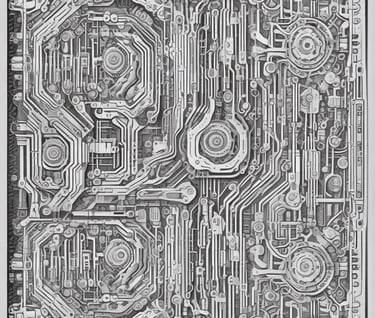Which Is Right for You?
Cost Comparison: Full-Time CTO vs. Fractional CTO
Full-Time CTO:
Typically commands a six-figure salary, plus equity, benefits, and bonuses
Cost structure assumes 100% ongoing involvement—even during slower periods
Fractional CTO:
Delivers 60–80% of the value of a full-time CTO at 35–55% of the cost
Flexible, retainer-based packages mean you only pay for active value delivery—no idle time
You need a full-time CTO if:
Your business requires continuous, hands-on technical leadership
You want someone deeply embedded in your day-to-day operations
You have the budget for a senior executive salary and benefits
A Fractional CTO is perfect if:
You’re in a period of rapid change or scaling, but not ready for a permanent hire
You want executive-level expertise and strategic guidance, but only pay for what you need
You’re looking for premium leadership at a fraction of the cost of a full-time CTO
The Full Scope of a CTO
A Chief Technology Officer (CTO) is more than just the “tech person” at the top. They’re responsible for turning business vision into reality through technology—balancing big-picture strategy with day-to-day execution. Here’s what a full-time CTO typically owns:
6. Technical Due Diligence & Risk Management
Identifies and mitigates technical risks (security, compliance, scalability)
Leads technical due diligence for M&A, fundraising, or major partnerships
Ensures disaster recovery and business continuity planning
7. Budgeting & Resource Allocation
Develops and manages technology budgets (R&D, vendors, cloud costs, etc.)
Prioritizes initiatives based on business value and ROI
Allocates people and tools efficiently
8. Vendor & Partner Management
Evaluates and manages technology vendors and partners
Negotiates contracts and ensures alignment with business needs
9. Customer & Market Engagement
Collaborates with customers and partners to shape product direction
Represents the company’s technology vision externally (conferences, sales, PR)
10. Governance & Compliance
Ensures technology and data practices meet legal and industry standards
Maintains high standards for privacy, security, and ethical use
1. Technical Strategy & Vision
Defines and communicates the long-term technology direction, always aligned with business goals
Develops and maintains the product or technology roadmap
Evaluates emerging tech trends for strategic advantage
2. Team Leadership & Development
Builds, leads, and mentors engineering teams
Sets standards for hiring, onboarding, and professional growth
Fosters a high-performance, inclusive culture
3. Product & Platform Oversight
Oversees architecture, design, and development decisions
Ensures products are scalable, secure, and reliable
Drives best practices in software development (agile, CI/CD, code quality, etc.)
4. Process Improvement & Operational Excellence
Optimizes engineering processes for speed and quality
Implements key metrics (like DORA, uptime, MTTR) to track and improve performance
Manages technical debt and ensures rapid, predictable delivery
5. Stakeholder Communication
Translates complex technical topics into clear business outcomes
Acts as the bridge between business and technology teams
Prepares and presents technical updates, risk assessments, and recommendations


How a Fractional CTO Delivers That Value - On Demand
A Fractional CTO brings all the strategic leadership of a full-time CTO, but on a flexible, part-time, or project basis. This is ideal for startups or scaling companies that need senior expertise—without the cost or commitment of a full-time executive.
Here’s what a Fractional CTO typically delivers:
Rapid technical assessment and punchlist creation (first 30–90 days): Quickly surfaces urgent issues and opportunities for improvement.
Organizational and skills evaluation: Assesses team strengths, gaps, and development needs.
Crisis management and urgent technical turnarounds: Steps in to resolve critical issues or technical fires.
Interim technical leadership during transitions: Fills the leadership gap after a CTO departure, post-funding, or during M&A.
Advisory oversight for scaling teams and processes: Guides hiring, process improvement, and strategic pivots.
The Key Difference:
A full-time CTO is embedded in your business, managing every aspect of technology daily.
A Fractional CTO delivers that same caliber of leadership—but focused on what matters most, when you need it most. You get senior expertise, a fresh perspective, and actionable outcomes—without paying for idle time.
There for the hurry not the wait
matt@foundryfractional.com
+1-206-480-8525
© 2025. Foundry Fractional. All rights reserved. Functional Technology TM & Copyright © 2024 CTOx LLC. All rights reserved.
